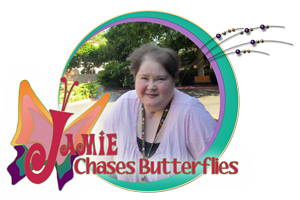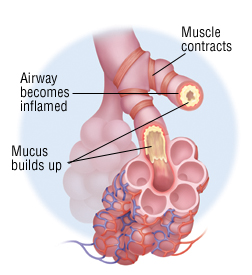Breathing issues are one of the subjects that I consider myself an expert on. I have been dealing with tracheal stenosis due to an autoimmune issue for the last seven years, so although mine doesn’t affect my lungs. I can still understand the dilemma of figuring out how to have an active life when dealing with an oxygenation issue. I wasn’t sure how I wanted to approach the subject of COPD, which is an umbrella for many different breathing issues. I decided to approach it the way I would like to have someone explain my options to me, as a friend. I am your friend. I hope when you read my articles you can feel the love that I put into them. I am a blunt, sometimes abrasive person but my heart’s desire is to encourage others, including myself to live a life of wellness and not fear. That being said, I do want to make one loving statement. No matter what condition you are in, you are still valuable and you can still live a life of wellness.
Not being able to breathe well is a scary and overwhelming process to live with. As I eluded to above, COPD is an umbrella for 3 major breathing issues, emphysema, chronic bronchitis, and refractory asthma. Over 24 million Americans have COPD in some form. It is also the third leading cause of death. It’s scary when you read those sentences isn’t it? Makes you want to crawl up in a ball and give up on life, right? Please don’t. I’m going to explain what the three things are and then I’m going to end this article with some wonderful helpful tips that I learned from taking pulmonary rehab that work for me. Let me just say this, bug your doctor about getting into pulmonary rehab. It’s amazing. You will get a life back that you will enjoy.
- Emphysema: causes damage to the air sacs in your alveoli. The alveoli are little things in the lungs that help you absorb oxygen into the body and disperse it throughout where it is needed.
What causes the damage you may be asking? Simple really: smoking, exposure to chemicals, dust, poor air quality. - Chronic Bronchitis: It’s a long term swelling or inflammation in the bronchi. Bronchi are the tubes in your chest that help you get rid of mucus so it doesn’t collect in one spot.
- Refractory Asthma: Asthma that cannot be reversed.
I want you to know something about me, when I first started living life with breathing issues. I needed to take time to process through all my emotions. My emotions ranged from fear, anger, overwhelming doubt, giving up on myself, and feelings of failure. It’s normal to feel this way, but don’t let those feelings stop you from taking good care of yourself. I’m still discovering new things about my feelings and what I need to do for my own self-care. Let me just say that understanding and facing the fact that there is no cure for a breathing issue is one of the hardest things that I have ever had to deal with. I hope that you will find a supportive, loving, and compassionate team of individuals who fill your life with hope and motivation to keep on breathing.
I told you I was going to share some things that have helped me with my breathing and a few of these things I learned from taking Pulmonary Rehab. Before you find a personal trainer or health coach I recommend you take Pulmonary Rehab. Personal trainers are amazing people and so are health coaches, but they may not know what is needed when dealing with a breathing issue. It is best if you go in with a plan of your own and you talk and share with them. My pulmonary rehab was at Legacy Hospital in Vancouver Washington. They did an excellent job teaching me how to learn to listen to my body, use my oximeter, and when to stop exercising.
Here are my tips:
- If you haven’t taken Pulmonary Rehab. I hope you will go to the doctor and talk to them about it. Stand up for yourself and say you need this so you can move and breathe and have a life of wellness. I had to ask my doctor about it, she didn’t know it existed until I told her about it.
- Learn proper breathing techniques especially when you are moving your body and have a hard time breathing. There are two techniques that I was taught in Pulmonary Rehab. Pursed Lip Breathing and Diaphragmatic Breathing. Both are awesome. The one that I use the most often is Pursed Lip Breathing. There are some videos that I found that showcase these techniques at the end of this article.
- Buy yourself these three things: a peak flow meter, an oximeter and notebook to write down your measurements. These tools will help you keep track of your oxygen levels.
- Find supportive people that understand and know about your condition that can help you when you need it or know what to tell others who don’t understand.
- Stay active. For me, cardio is a hard thing for me to do. I focus on strength training. The goal is to move slowly and not be ‘gung hoe’ towards your progress in exercise. Start with walking for ten minutes or five minutes. Build your muscles.
- When I am not able to breathe well. I talk to myself in my head. I say this will pass. I’ve gotten through this hiccup before. It works. When I freak out my breathing gets worse.
- Chart your numbers so you know if it is a day to exercise or not. It also helps your doctor know if the medication or techniques are working for you.
The most important thing I want you to know is even though you have to do things different and slower you can still get things done. Moving our bodies, eating well, following the breathing techniques, and getting the instruments you need to help you breathe like a rock star is going to help you feel and achieve your goals. Life is not over.
More Information:
- Cleveland Clinic: COPD Exercise & Activity Guidelines
- COPD Foundation: Breathing Techniques
- COPD Foundation: Coping with COPD
- National Heart, Lung and Blood Institute: Who is at Risk for COPD?
- Respiratory Health Association: Understanding COPD
- Thorax: Diagnosis and definition of sever refractory asthma: an international consensus statement from the Innovative Medicine Initiative (IMI)
- VeryWell: The Pros and Cons of Pulse Oximetry
- WebMD: Pulmonary Rehabilitation for COPD
Videos
Anxiety & Stress Relief with Diaphragmatic Breathing
COPD Pursed-lip Breathing Exercise
 Jamie Holloway lives in the Portland, Oregon area. Since October 2011 she has been sharing her Journey Toward Health and Wellness with Vasculitis through her blog at JamieChasesButterflies.com. As most of her articles will be about Men’s Health, Jamie intends to write her articles as though she was sharing important information with her brother, nephews and friends. This article was originally written for Wellness Works NW. We hope you are as inspired as we are with the raw candor Jamie uses in her writing.
Jamie Holloway lives in the Portland, Oregon area. Since October 2011 she has been sharing her Journey Toward Health and Wellness with Vasculitis through her blog at JamieChasesButterflies.com. As most of her articles will be about Men’s Health, Jamie intends to write her articles as though she was sharing important information with her brother, nephews and friends. This article was originally written for Wellness Works NW. We hope you are as inspired as we are with the raw candor Jamie uses in her writing.
For more information Contact Jamie.






 Please wait...
Please wait...